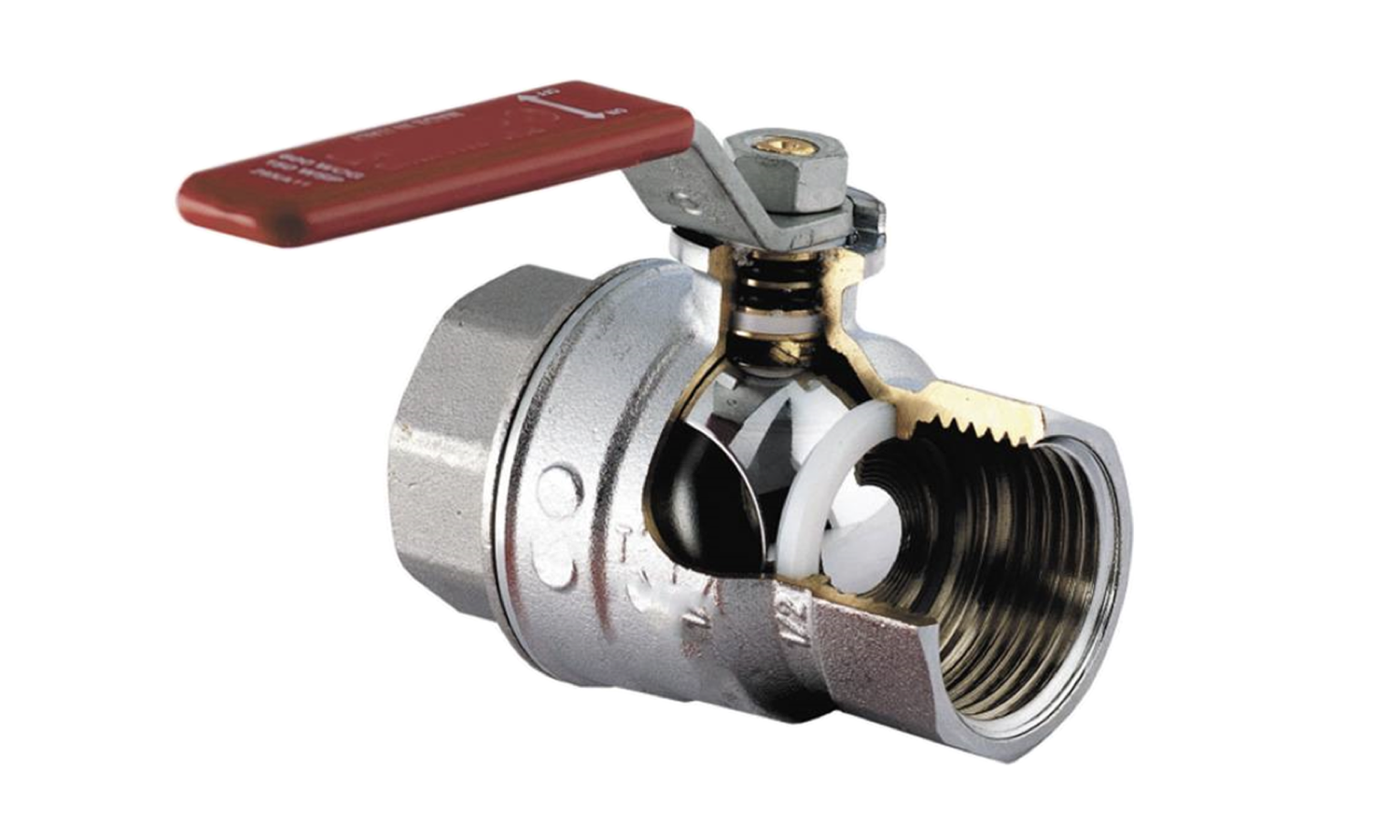Please do not block ads on our site. Clicks on ads help us exist, grow and become more useful for you!
Operating principle of the ball valve
The principle of operation of the ball valve is based on shutting off the flow by rotating the ball-shaped shut-off element around an axis that is perpendicular to the flow direction. The shut-off element has a hole, the internal diameter of which matches the diameter of the pipeline. In the open position, the axis of the hole in the ball aligns with the pipeline axis, while in the closed position, it is perpendicular. To fully open or close the valve, it is sufficient to rotate the ball by 90°.
Sealing the flow is ensured by the tight contact of the polished surface of the ball with the polymer end rings. In floating ball valves, additional sealing is provided by the shut-off element being pressed against the end ring under the pressure of the working medium. Almost all threaded ball valves are designed with a floating ball.
For manual control of the ball valve, handles are used, and for remote or automatic control, a rotary electric actuator can be installed on the ball valve.
During operation, the shut-off element of the ball valve must be in one of the extreme positions — fully open or fully closed. Operating the ball valve in a partially open position is not allowed, as abrasive wear of the ball can lead to a loss of flow sealing.
question : comment : feedback
230
 Catalog of
Catalog of of ball valves
Genebre
Genebre
Genebre
Genebre
Genebre
Genebre
Valtec RUS
Valtec RUS
Valtec RUS
IVR
IVR
IVR
IVR
Breeze
Danfoss
Danfoss
Oventrop
Oventrop
Broen
Broen
Honeywell - Resideo
Bray
FAF
VIR
VIR
Vexve
Vexve
LD
IMI Hydronic
IVR
IVR
IVR
Naval
FAF
Valtec RUS
Маршал
Breeze







 ISO 5211
ISO 5211
